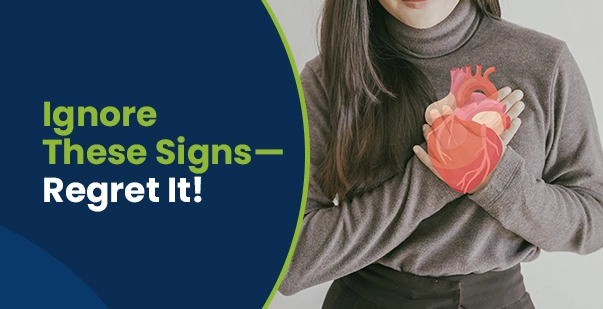Table of Contents:
- What Is Acute Coronary Syndrome?
- Three Major Conditions Associated With ACS
- What Are The Symptoms of Acute Coronary Syndrome?
- Silent Symptoms of ACS: The Hidden Warning Signs
- What Are The Top Causes of Acute Coronary Syndrome?
- ACS Prevention Starts with Awareness!
Did you know that every 40 seconds, someone in the United States suffers a heart attack? Many of these are linked to acute coronary syndrome (ACS), a serious medical emergency that occurs when blood flow to the heart is suddenly blocked. Your heart works nonstop, pumping oxygen-rich blood to keep you alive, so imagine what happens when that supply gets cut off. ACS can lead to intense chest pain, heart attacks, and even sudden cardiac arrest. The key to surviving this is quick recognition. In this blog, we’ll walk you through what ACS is, its warning signs, and its causes so you can act fast before it’s too late.
What Is Acute Coronary Syndrome?
The medical ACS acronym is Acute Coronary Syndrome (ACS). It is a condition that happens when blood flow to the heart is suddenly reduced. The heart needs oxygen-rich blood to work properly. When there’s a blockage in the arteries, the heart doesn’t get enough oxygen. This is often caused by plaque rupture, where fatty deposits in the artery walls break open, which triggers the formation of a blood clot. This clot can completely block blood flow, leading to acute coronary syndrome (ACS) and potentially causing a heart attack or other serious heart conditions. This can lead to serious heart problems, including heart attacks.
Three Major Conditions Associated With ACS
Acute Coronary Syndrome (ACS) isn’t just one condition. It is a spectrum of serious, potentially fatal heart emergencies caused by reduced blood flow to the heart. The common conditions associated with ACS cardiology include the following:
Unstable Angina
Unstable angina is characterized by sudden chest pain that doesn’t subside with rest. It signals an impending heart attack and indicates that the heart isn’t receiving enough oxygen. While it’s not a heart attack, it’s a serious warning sign that requires immediate medical attention.
Non-ST-Elevation Myocardial Infarction (NSTEMI)
NSTEMI is a type of heart attack that causes damage to the heart muscle but doesn’t show significant changes on an ECG. Despite the lack of dramatic ECG changes, it still poses a risk of severe complications and requires timely intervention to minimize damage.
ST-Elevation Myocardial Infarction (STEMI)
STEMI is a more severe type of heart attack where there are significant changes in the ECG and considerable heart muscle damage. It is the most critical form of ACS, requiring immediate intervention to restore blood flow and minimize permanent damage to the heart.
What Are The Symptoms of Acute Coronary Syndrome?
Symptoms of acute coronary syndrome (ACS) can vary widely from person to person. While some may experience mild discomfort, others could face intense, life-threatening warning signs. In fact, Coronary Heart Disease (CHD), which includes ACS, accounts for approximately one-third of all deaths in individuals over 35 in the U.S. Thus, being vigilant about these symptoms is important.
Chest Pain or Discomfort (Angina)
Chest pain is the most common symptom of ACS. The pain may feel like pressure, tightness, fullness, burning in the chest or a squeezing sensation. Some people mistake it for heartburn. The pain can spread to other parts of the body, such as the arms (more commonly the left), neck, jaw, shoulders, upper back, or upper stomach. It can last for a few minutes or come and go. If it persists for more than 10 minutes, aspirin or nitroglycerin might be used in emergency cases, and immediate medical attention is crucial, as it could indicate a heart attack.
Shortness of Breath (Dyspnea)
Shortness of breath occurs when the heart cannot pump enough oxygen-rich blood to the body. This can make breathing difficult, even when at rest. Some people may feel breathless suddenly, while others may experience it gradually over time. Shortness of breath should not be ignored, especially when it happens with other ACS symptoms.
Nausea and Vomiting
Nausea and vomiting can occur due to the body’s stress response to heart muscle damage. The vagus nerve, which connects the brain, heart, and digestive system, can be overstimulated during a heart attack, leading to an upset stomach. This symptom is more frequently reported in women than in men. Some people may also experience abdominal discomfort, making it easy to mistake ACS for indigestion or food poisoning.
Sweating (Diaphoresis)
Excessive sweating is a common sign of ACS. This sweating happens suddenly and without an obvious reason, even in a cool environment.
The skin may feel cold and clammy. Sweating is a sign that the body is under extreme stress and is trying to regulate itself. If sweating happens along with other ACS symptoms, medical attention is needed immediately.
Dizziness or Lightheadedness
ACS in medical terms can cause dizziness or lightheadedness due to a drop in blood pressure. When the heart struggles to pump blood effectively, the brain may not receive enough oxygen, leading to unsteadiness or faintness. In severe cases, loss of consciousness (syncope) can occur, which may indicate a dangerous drop in blood pressure, potentially due to cardiogenic shock. If dizziness arises suddenly, especially with chest pain or shortness of breath, it should never be ignored.
Fatigue
Extreme tiredness, even with little or no physical activity, can be a warning sign of ACS. When the heart is not pumping efficiently, the body does not get enough oxygen and energy, leading to persistent fatigue.
Fatigue, more common in women and older adults, can occur days or weeks before a heart attack. Regular check-ups are important, especially for high-risk individuals like diabetics and older adults, to catch early warning signs and prevent serious complications.
Silent Symptoms of ACS: The Hidden Warning Signs
ACS often lacks the classic symptom of chest pain. In fact, approximately 20% of acute myocardial infarctions are silent, presenting without noticeable symptoms or with vague discomfort that patients might not recognize as serious. This is especially true for older adults, women, and individuals with diabetes, who may experience atypical or no symptoms at all. Instead, they may have:
Shortness of Breath
For some, the only symptom of ACS may be difficulty breathing. They may not have any chest pain but still struggle to catch their breath, even while resting.
Unexplained Fatigue
Some individuals may feel extremely weak or exhausted without any clear reason. This type of fatigue can appear suddenly or persist for days.
Sweating and Nausea
People with silent ACS may experience cold sweats, nausea, or vomiting, which can be mistaken for flu, indigestion, or food poisoning.
Silent ACS is dangerous because people may not recognize the warning signs and delay seeking medical help, increasing the risk of severe complications.
Read More: Heart Blockage – Explained With Pictures!
What Are The Top Causes of Acute Coronary Syndrome?
Without enough oxygen, the heart cannot function properly, leading to chest pain, heart attacks, or even life-threatening complications. Several factors contribute to ACS, with most of them involving narrowed or blocked arteries.
Plaque Buildup (Atherosclerosis)
Atherosclerosis is the most common cause of ACS. It occurs when fatty substances, cholesterol, calcium, and other materials collect on the inner walls of the coronary arteries. This buildup gradually narrows the arteries.
Over time, (e.g., often beginning in childhood and progressing with age), the plaque can become unstable and rupture. When this happens, the body responds by forming a blood clot at the site of the rupture. This clot can suddenly block the artery, cutting off the oxygen supply to the heart. If the blockage is severe, it can cause a heart attack. Atherosclerosis develops slowly over many years due to factors such as an unhealthy diet, lack of exercise, smoking, and genetic predisposition.
Blood Clots (Thrombosis)
Blood clots form when the body tries to heal a damaged artery. If a plaque in the artery breaks open, the body sees it as an injury and forms a clot to stop the bleeding. While blood clots are a normal part of healing, they can be dangerous when they form in arteries, as they can block blood flow and lead to serious health problems.
The risk of thrombosis increases with conditions such as high cholesterol, smoking, and high blood pressure. If the clot is large enough to block an artery, it can cause a heart attack or lead to unstable angina.
Coronary Artery Spasm
A coronary artery spasm happens when the artery suddenly tightens or contracts, reducing blood flow to the heart. Unlike atherosclerosis, where the arteries are narrowed due to plaque buildup, a spasm can occur in arteries that appear normal.
Spasms can last for a few minutes or longer and may happen repeatedly. They can be triggered by emotional stress, exposure to cold temperatures, smoking, or stimulant drugs like cocaine. These spasms are usually temporary, but they can cause chest pain and, in some cases, trigger a heart attack if blood flow is significantly reduced. These spasms can be diagnosed with specific tests like angiograms.
High Blood Pressure (Hypertension)
High blood pressure makes the heart work harder to pump blood through the arteries. Over time, this added strain can damage artery walls, making them more prone to plaque buildup. When the arteries become stiff and narrow, the risk of plaque rupture and clot formation increases, leading to acute coronary syndrome (ACS). Hypertension is often referred to as the “silent killer” because it doesn’t always show noticeable symptoms. Yet, around 1.28 billion adults aged 30 to 79 globally are affected by hypertension. Regular check-ups are key to catching it early and protecting your heart.
Many people do not realize they have high blood pressure until they experience complications such as heart disease or stroke. Managing blood pressure through a healthy diet, regular exercise, and medication can help reduce the risk of ACS.
Diabetes
Diabetes affects how the body processes sugar, and high blood sugar levels can damage blood vessels over time. People with diabetes are more likely to develop atherosclerosis because excess glucose in the blood leads to inflammation and increases the risk of plaque buildup. Additionally, diabetes affects the way the body forms blood clots, making it easier for clots to block arteries.
Many people with diabetes also have other risk factors, such as high blood pressure and high cholesterol, which further increase the likelihood of ACS. Since nerve damage from diabetes can reduce the ability to feel chest pain, heart attacks in diabetic individuals may go unnoticed until serious damage has occurred (referred to as Silent Ischemia).
High Cholesterol (Hyperlipidemia)
Cholesterol is a fatty substance that the body needs in small amounts, but high levels of “bad” LDL (Low-Density Lipoprotein) cholesterol can lead to plaque formation in the arteries.
LDL cholesterol deposits itself on the artery walls, while “good” HDL (High-Density Lipoprotein) cholesterol helps remove excess cholesterol from the bloodstream.
People with low levels of HDL cholesterol and high levels of LDL cholesterol are at greater risk of developing atherosclerosis, which can lead to ACS. An unhealthy diet, obesity, lack of exercise, and genetic factors like familial hypercholesterolemia often cause high cholesterol.
Obesity
Excess body weight puts additional stress on the heart. It increases the risk of developing conditions such as high blood pressure, diabetes, and high cholesterol, all of which contribute to ACS.
People with obesity often have higher levels of inflammation in the body, which can speed up plaque buildup in the arteries. You can also mention that waist circumference is often a better predictor of ACS risk than BMI. Losing weight through a healthy diet and exercise can significantly lower the risk of ACS.
Read More: How to Become a Cardiologist?
ACS Prevention Starts with Awareness!
A heart attack doesn’t always come with a dramatic collapse. It can start as mild discomfort, a little pressure in the chest, or even just unusual fatigue. That’s why recognizing acute coronary syndrome (ACS) early is critical. Blocked arteries can cut off blood flow to the heart, leading to chest pain, shortness of breath, nausea, or dizziness. If ignored, it can be fatal.
Smoking, high cholesterol, stress, and poor lifestyle habits increase the risk, but small changes, like choosing a heart-healthy meal, taking a short walk, or managing stress, can make all the difference. If you or a loved one ever faces a heart emergency, knowing what to do matters. Learn the signs, take action, and consider an ACLS course to be prepared when every second counts. Your heart’s health is in your hands.
References:
https://www.mayoclinic.org/diseases-conditions/acute-coronary-syndrome/symptoms-causes/syc-20352136
https://my.clevelandclinic.org/health/diseases/22910-acute-coronary-syndrome
https://www.heart.org/en/health-topics/heart-attack/about-heart-attacks/acute-coronary-syndrome
https://www.ncbi.nlm.nih.gov/books/NBK459157/







